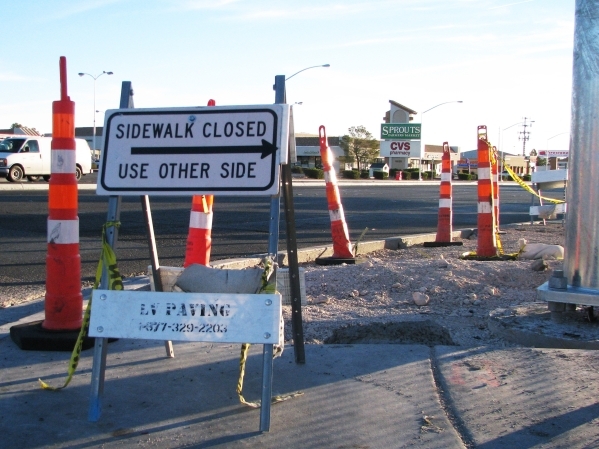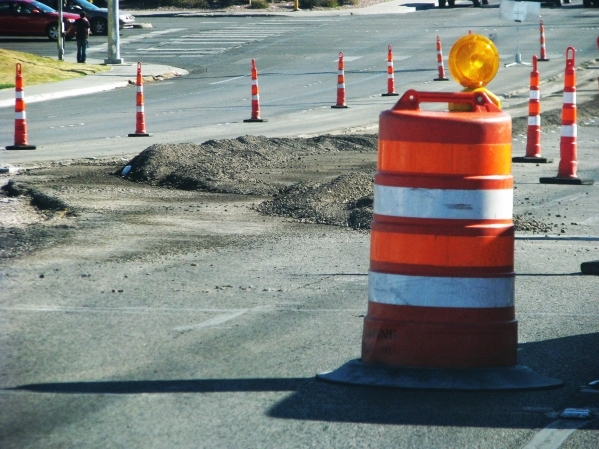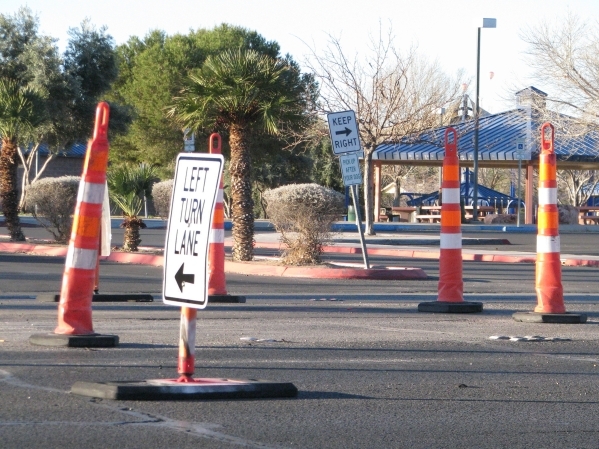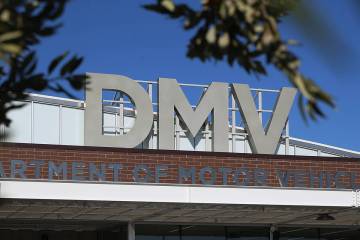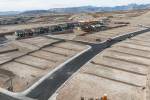Inspections can delay removal of road construction cones
There's an old joke that the Southern Nevada state bird is the traffic cone. With multiple entities working on road construction across the valley, it's easy to believe that the construction never ends, and the cones never leave. At times, it will seem like a project is finished, and yet the area will remain cordoned off to traffic for days — in some cases, weeks. Many have asked why the cones remain when the project is done, and the simple answer is, they don't.
"When the project is done, the cones go away," said Tony Illia, public information officer for the Nevada Department of Transportation. "The perceived delay is because the work isn't finished until it's been inspected. Once the work is completed, we'll go through and inspect the work, and we'll fine-tune it. That's what we call a punch list."
A punch list could include things such as a stripe that needs to be adjusted or a guardrail that's a little off. On top of the inspectors, NDOT also will adjust things based on comments from residents. The inspections aren't just done at the end of the project.
"We, as the owners, will do quality inspections and stay in constant contact with the contractor. As issues come up — whether it's traffic control, trashpick up or something else — we'll address it as it happens," Illia said. "Only when that is all taken care of do the cones and other construction signs get removed."
City Of Henderson public information officer Keith Paul said that it isn't just inspections that will leave a site that looks finished awaiting cleanup.
"When you're talking about roadways, a lot of times, it's not just a matter of inspection," Paul said. "A lot of times, it something like the asphalt needing to cure. The work is done, but the asphalt needs to settle before we can stripe it and do that kind of thing. Then we can do final cleanup."
Some of the longest-running and most obvious construction projects are associated with the Regional Transportation Commission of Southern Nevada, and although those projects are going to be hampering traffic for quite a while, the RTC has made an effort to keep the public informed on projects.
"As Southern Nevada rebounds from the economic recession, we are experiencing growth in population and development," an RTC statement read. "That's why local governments, utility companies and private developers are investing in enhancing and maintaining our existing infrastructure and building new infrastructure to accommodate our current and future growth. While this is good news for both our economy and our roadways, it has frustrated the public and tested their tolerance for roadway construction. In response, the Regional Transportation Commission launched Seeing Orange, a campaign to provide the public with critical and important information about construction projects."
The roads are handled by a jumble of entities, with the city handling much of its own construction and NDOT working on not just the major highways but the state routes, which include many surface streets, such as Sahara Avenue, parts of Tropicana Avenue and Flamingo Road, which are not obviously highways. Seeing Orange creates a single phone number and website where people can get information about what a project is for and how long it's going to be there.
"When people are going in to work, they don't necessarily know what jurisdiction they're in," said John Penuelas, manager of engineering for the Streets and Highways Division of the RTC. "They don't know if the project is in Clark County or the city of Las Vegas. They don't know if it's an RTC project, a Water District project or whatever. Instead of forcing them to work it out on their own, Seeing Orange gives them one place to go to, and we do the legwork."
Because the RTC staff is familiar with the process, they can quickly determine the agency involved with the project. For RTC projects, the response can be almost immediate. For other agencies, there can be some work to sort things out that may cause a delayed answer. The staff of Seeing Orange is committed to responding to a query within 24 hours and getting back with a definitive answer within 72 hours of contact and usually much sooner. The extra work and cost of Seeing Orange was absorbed into the RTC's general budget.
"We're also making an effort to have better coordination among agencies for projects," Penuelas said. "That's a recent addition. We just started meeting in December of 2015."
The various agencies meet every two weeks to discuss upcoming projects and see what work can be combined to avoid digging up a street twice. For instance, if new sewer lines are being installed, that might be combined with a telephone line project.
Residents can console themselves that, eventually, whatever construction is slowing them down will be complete, and the traffic should flow smoother than before. There is also solace in knowing that the construction companies are incentivised to get the work done as precisely and quickly as possible.
"Typically, they don't get paid until they finish the punch list items and the cleanup," Illia said.
Residents can call 702-928-2663 (CONE) or visit seeingorangenv.com to submit questions and get road project information.
— To reach East Valley View reporter F. Andrew Taylor, email ataylor@viewnews.com or call 702-380-4532.
Seeing Orange
To get updates from Seeing Orange on road construction projects, call 702-928-2663 or visit seeingorangenv.com.



